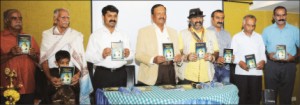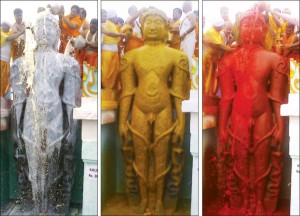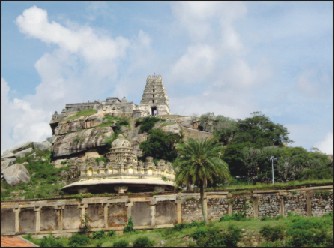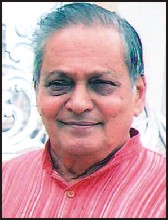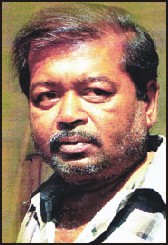With the rising number of buildings and the decreasing open space, terrace gardening is emerging as a great option to have the best of both worlds. Want to grow a terrace garden at your home? Our reader and contributor Vikram Kapoor shares with us his guide on how to grow wonderful veggies, flowers and fruits yourself.
Plants also need love. They can’t express their feelings but if you take proper care they will bloom,” says Kishore Kumar, a Bangalore resident who owns a terrace garden at his home in Shantinagar.
A few decades ago, almost all houses in Bangalore had a garden since plenty of space was available. However, since the IT boom, this space has been shrinking and today, it is almost non-existent. In spite of scarcity of accommodation, many people have come up with novel ways to grow plants even in the little available space. Terrace gardening is one of them.
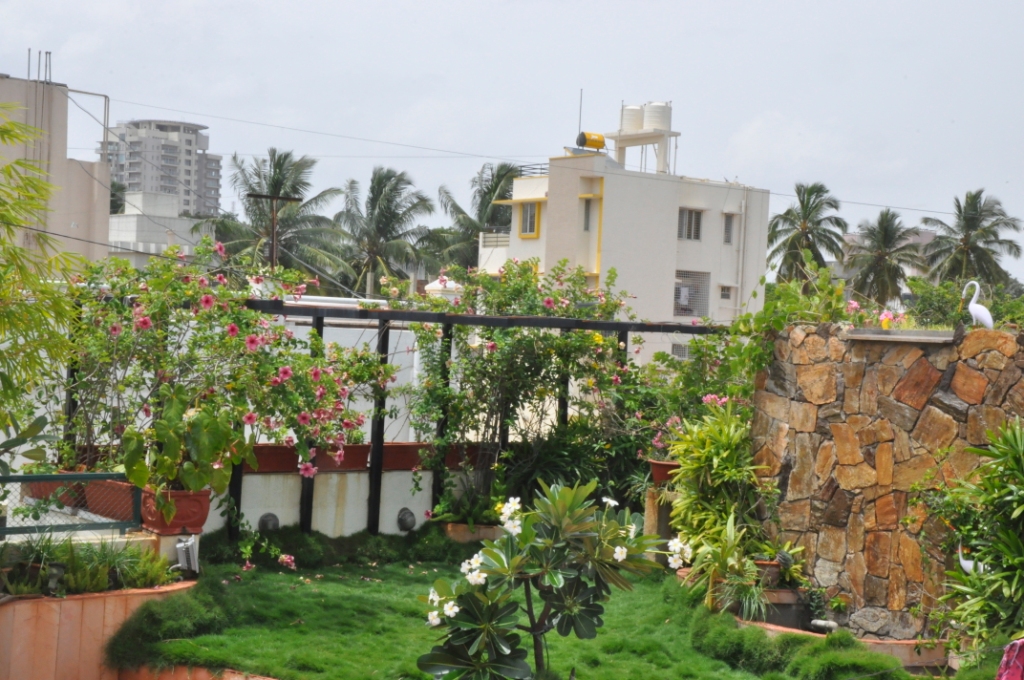
Kumar struck upon the idea of starting his garden around three years ago. He was very enthusiastic about gardening but did not have any space outside his house. This was when he decided to start growing plants on his terrace. “I haven’t kept any care taker or ‘maali.’ My wife and I take care of our garden ourselves and it gives us peace and satisfaction,” adds Kumar.
Why terrace gardening?
A terrace garden does not need much maintenance and it is hardly time consuming. Just devoting 10-15 minutes daily to the garden is sufficient for its upkeep. One can indulge in gardening generally in the morning hours before going to work. Most terrace gardeners prefer having their morning tea and newspaper on the terrace too.
Not just small flowering plants, one can also grow vegetables on the garden. Organic and home grown vegetables are a healthy alternative to the pesticide-ridden vegetables available in the market. However, big plants and tress cannot be grown on residential terraces because of their weight. One should water these plants with care so that the soil does not spread out. If the water falls with too much force, it can result in dirt and soil erosion. Any small area on your terrace or balcony which has access to the sun light for at least 4 to 5 hours a day can be converted into a vegetable garden.
One can harvest at least 400 grams of vegetables per week depending on the crops one chooses to plant. There are many valid reasons behind growing plants and vegetables on your terrace, some of them include getting fresh, faster cooking, nutritious & wholesome produce; it is cost effective and one also gets food safety & guarantee; you get a choice of vegetables, in fact, you can get Any Time Veggies (ATV); it is therapeutic, relaxing, educational and eco-friendly; it reduces our dependency and wastage and on the whole, is time well spent.
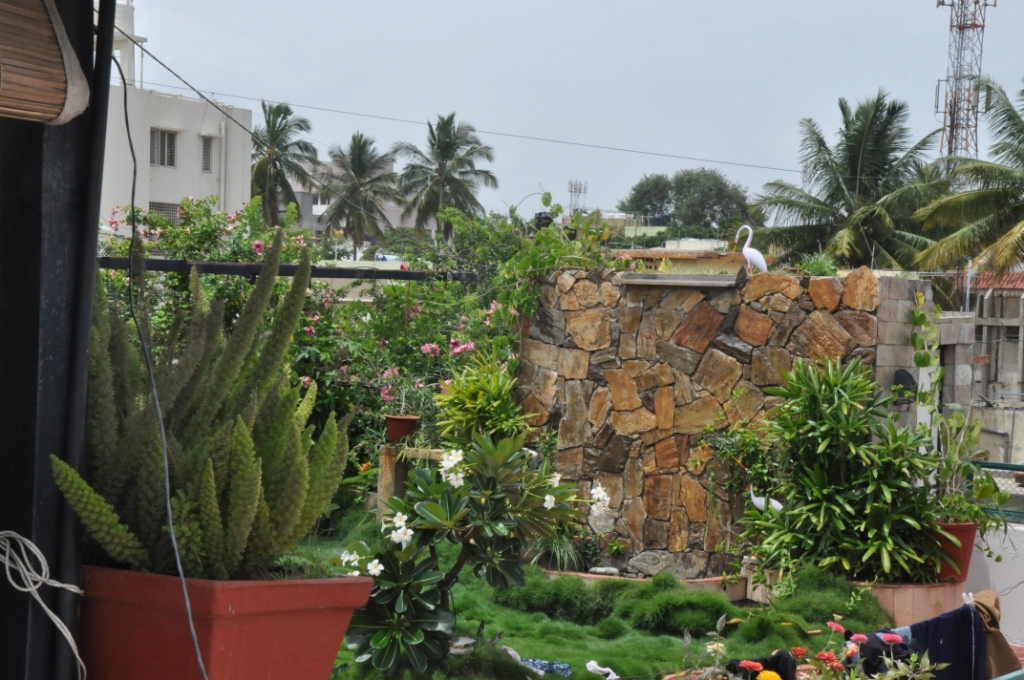
How do you do it?
Waterproofing your terrace is a must to make a proper terrace garden to ensure that it does not result in seepage or other damage to the building structure. If the terrace is big, it can be divided into two parts – one for garden and the other for seating arrangements or for some household chores. Artificial waterfalls and colourful lights can also be installed, which can enhance the beauty of these gardens at night.
The concept of this mini farming becomes more interesting and also provides you with a sense of satisfaction when you can use your old furniture as planter boxes. The old drawer, old chair, old cupboards and shelves, plastic bottles, tin containers, broken dressing tables and old shoes can be painted with bright and eye-catching colours and made ready to grow many small plants which will enhance the beauty of your terrace space.
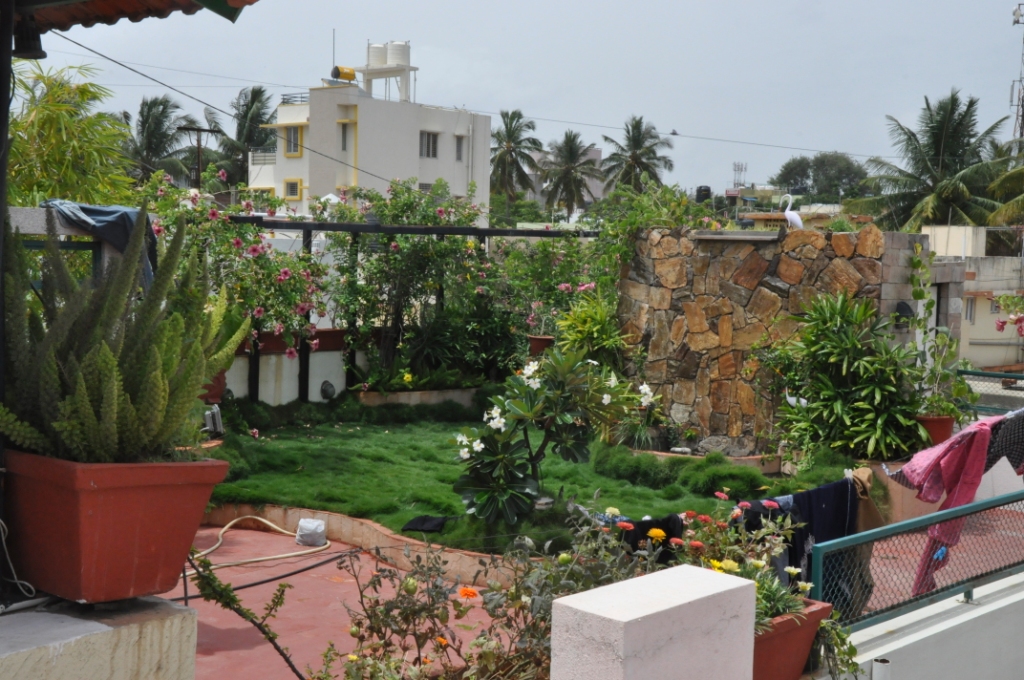
The daily leftover food in the home kitchen like fruit and vegetable peels, rotten food items and other wet waste are a rich source of minerals for the plants and can be composted and used as manure, helping us create a 100% waste-free environment.
Kumar said that regular cleaning is required as dry leaves and flowers also fall with the changing seasons. Regular cleaning and maintenance is a must for a beautiful garden.
“Believe it or not, a large number of birds come to our garden. In fact, many a times I have seen sparrows and butterflies in the garden. Also, many new types of colourful and beautiful birds come which cannot be seen normally,” adds Kishore
How to spread the culture of terrace gardening?
Mr. Kaushik from The Vittal Mallya Scientific Research Foundation (VMSRF), a non-profit research organisation, feels that conducting workshops for kitchen gardening is an excellent idea for the people to bring awareness about organic food consumption in our country.
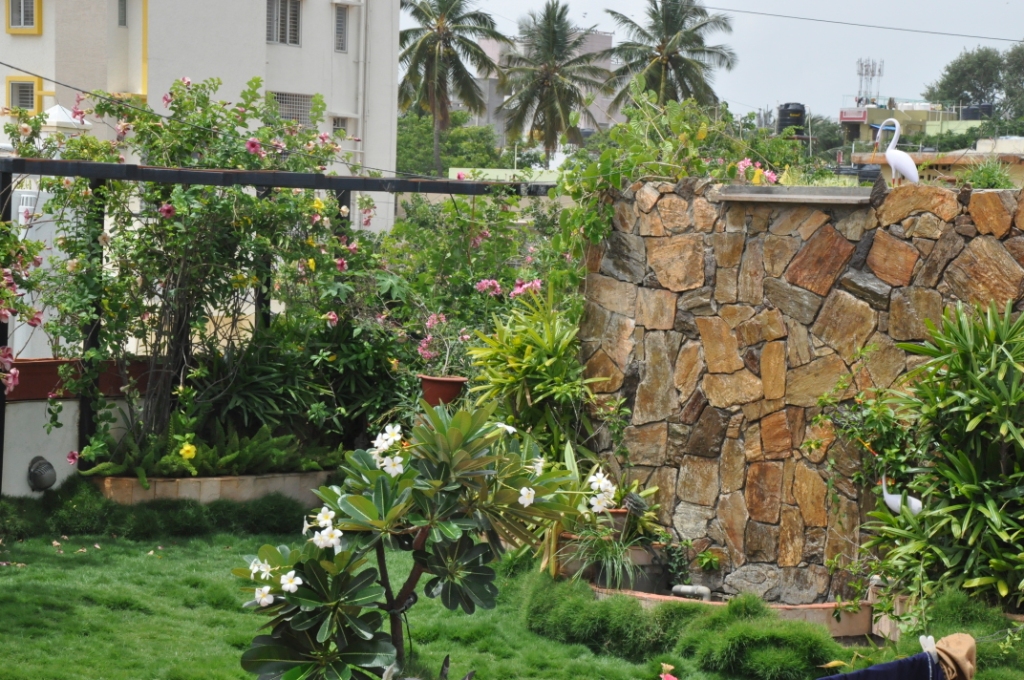
He says, “Our motto is to teach people to ‘grow your own organic food’. For this, we conduct workshops on kitchen gardening so that people can apply the same if they have open space like a roof top, a balcony, an open ground space, etc.”
While I was having a final talk with Mr. Kishore, he threw some light on the feeling of satisfaction that one gets when one does a great job to save the environment. “Summer evenings are great moments of surprise for my friends when I take them to the terrace and they feel as if they are in the arms of nature,” said Kishore
The terrace in most of our houses is an unused space and it would be ideal for gardening. Help yourself by not only making your environment healthy but at the same time helping yourself live a healthier life and also a peaceful one.
If the house owners will start applying this idea, the day will not be very far when the garbage issue of our country will end and all the waste will be consumed by our own top and Green garden.
– Vikram Kapoor
Excited? Here are a few people and groups that can help you get started with terrace gardening.
1. Purna Organics – Bangalore
2. Vani Murthy – Bangalore
3. A Facebook group for more know-how
4. My Sunny Balcony can help you green small spaces like balconies – Bangalore
5. Jiva Organics – Hyderabad
6. Greentech Life – Bangalore
7. Urban Leaves India – Mumbai
8. Hortitech Services – Chennai
source: http://www.thebetterindia.com / The Better India / Home> Bangalore / TBI Reader / by Vikram Kapoor / November 13th, 2014
